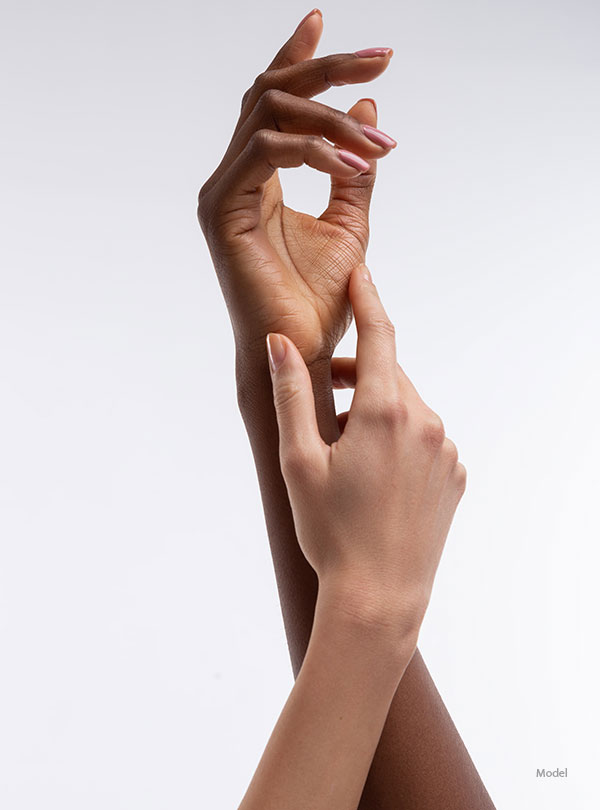Carpal Tunnel Syndrome
Carpal tunnel syndrome is a common condition that results in pain, numbness, or tingling in the hand as a result of nerve compression.
Model
What is Carpal Tunnel Syndrome?
Carpal tunnel syndrome results from increased pressure on the median nerve. This nerve runs from the arm into the hand, passing through an opening called the carpal tunnel at the level of the wrist. The median nerve is responsible for providing sensation to the thumb, index, and long fingers and for controlling some movements of the fingers. When pressure is placed on the median nerve as it passes through the carpal tunnel, numbness, tingling, pain, and even weakness can result.

What are the symptoms of Carpal Tunnel Syndrome?
Numbness or tingling in the thumb, index, long, and/or ring fingers is the most common symptom of carpal tunnel syndrome. Pain in the hand and fingers can also occur. Finally, weakness in the hand can be an indicator of severe carpal tunnel syndrome.
How can I treat Carpal Tunnel Syndrome?
In certain cases, the symptoms of carpal tunnel can be treated conservatively with use of a brace. However, if this is not effective, surgery may be indicated. Surgery involves cutting or releasing the transverse carpal ligament in the wrist, which serves as the “roof” of the carpal tunnel. Once this has been released, pressure is taken off the median nerve and symptoms typically improve. If symptoms have been present for a long time or if the median nerve has been irreversibly damaged, symptoms may not resolve completely. Dr. Yonker will perform a detailed history and specialized examination of the hand to determine if surgery is needed in your particular case.
Surgical Options
Carpal Tunnel Release can be done with an open technique or a minimally-invasive endoscopic technique. Dr. Yonker will discuss the risks and benefits of each technique at your consultation if surgery is indicated. Studies have shown that both techniques have similar long-term outcomes.
Surgical Recovery
Carpal tunnel release surgery is typically done as an outpatient procedure. Most patients are able to return to their normal daily activities within 1-2 weeks of surgery.